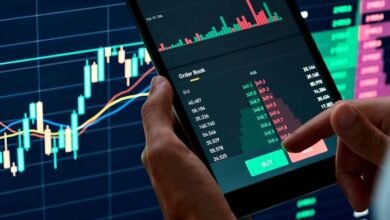
In the world of technical analysis, identifying key levels in the market can give you an edge in making profitable trades. One such key level is the Daily Bullish Order Block. If you’re serious about trading, understanding how to spot and use these order blocks can help you make smarter decisions. In this post, I’ll break down what a Daily Bullish Order Block is, how to identify it, and how to use it in your trading strategy.
What is a Daily Bullish Order Block?
A Daily Bullish Order Block refers to a specific area on a daily chart where institutional buyers (like banks and hedge funds) have placed large buy orders, causing the price to reverse or move upward from that level. It’s essentially a zone where the “smart money” has accumulated buy positions, creating a strong level of support. When the price returns to this zone in the future, it’s likely to bounce back up, as those institutional orders are often still in play, providing buying pressure.
How to Identify a Daily Bullish Order Block
Identifying a Daily Bullish Order Block requires a bit of practice, but with time, it becomes easier. Here’s a step-by-step guide:
1. Find a Strong Downtrend
- Look for a strong downtrend on the daily chart where the price has been moving lower over several candles.
2. Spot the Last Bearish Candle Before the Uptrend
- Identify the last significant bearish (red) candle before the price starts to reverse and move upward. This candle represents the point where selling pressure reached its peak before buyers took control.
3. Mark the Order Block Zone
- Draw a horizontal line at the open and close of this last bearish candle. This forms your order block zone. The top of the candle is the high of the zone, and the bottom is the low.
4. Confirm with Volume and Market Structure
- Check for a spike in volume around this area, as it indicates heavy buying activity. Also, observe if the market structure shows a clear break of the previous downtrend, confirming a bullish reversal.
How to Use the Daily Bullish Order Block in Your Trading Strategy
Once you’ve identified a Daily Bullish Order Block, the next step is to use it in your trading. Here’s how:
1. Wait for the Price to Return to the Order Block
- Patience is key. Wait for the price to retrace and test the order block zone. This might happen over several days or even weeks, depending on the market.
2. Look for Bullish Signals
- When the price enters the order block zone, watch for bullish signals like bullish candlestick patterns (e.g., engulfing, hammer) or a rejection wick, which indicate that buyers are stepping in.
3. Enter the Trade
- Once you see confirmation that the order block is holding, you can enter a long position (buy trade). Your stop loss should be placed just below the order block zone to manage risk.
4. Set Your Targets
- Target the next resistance levels above the order block for your take-profit points. You can also trail your stop loss as the price moves in your favor to lock in profits.
Why Daily Time Frame?
The daily time frame is significant because it reflects the actions of institutional players who base their decisions on higher time frames. Daily bullish order blocks are generally stronger and more reliable than those on lower time frames, making them ideal for swing traders and position traders looking to capture larger moves.
Conclusion
Incorporating Daily Bullish Order Blocks into your trading strategy can significantly improve your ability to identify high-probability entry points. By understanding where institutional buyers are likely to be active, you can align your trades with the market’s big players, increasing your chances of success. Remember, like any trading strategy, it’s essential to backtest and practice identifying order blocks in various market conditions. With time, you’ll gain the confidence to use this powerful tool effectively in your trading arsenal.





